Pre-History of Rome, New York
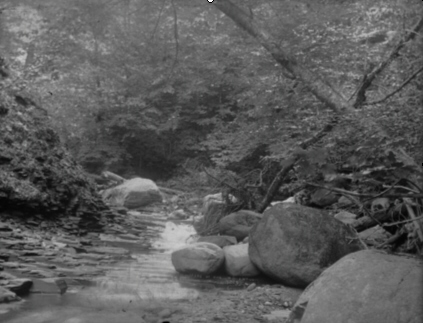
New York in the pre-history period was covered by a large glacier. The glacier’s front was ever changing. Thaw erosion produced what we now call the “Oneida Carry” and made the future possible. The rock was hard and impervious to the erosion. What does this simply mean? It left Rome as a strategically high area, where the soil was fertile and was the beginning of a vast water shed. Portions of the Black River, Mohawk River and Wood Creek flow through Rome. From this location a person could travel from the St. Lawrence River (Canada) to the Atlantic Ocean (New York City).
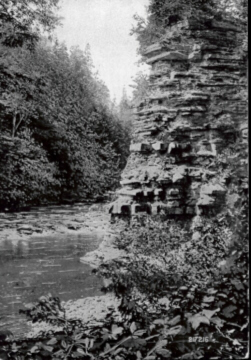
Erosion from the constant thawing of the large glaciers carved out the features which made Rome a strategic area. Above are portions of the Mohawk River and the dense wilderness that covered the land after the exodus of the glaciers.
Most early “society” immigrated around Oneida Lake. Paleo-Indians made their appearance about 10,000 years ago. The Copper Age (2500 BC) brought the first of the permanent societies in North America. Known as the Owasco Culture, they were an agriculturally based economy. 14th Century tribal warfare brought about the big split between the Native Americans. The Onondagas, Cayugas (a faction of the Onondagas), Senecas, Mohawks, Oneidas (a faction of the Mohawk). Ironically, the word Mohawk literally translates to mean Cannibal. Out of this split was born the Iroquois Confederacy or Tree of Peace as they called it. Society for the Confederacy flourished. Their braves were powerful and skilled.

Above is a map showing the Six Nations of the Iroquois Confederacy.
Fur traders and pelts men made their way into the Mohawk Valley. 1609 brought the first documented visit of a “white” man into the Mohawk Valley, Samuel de Champlain. However, his intentions were not friendly and he led an attack against the Iroquois and was successful. His new weapon, the rifle, was no match for the bow and arrow. As a result of the battle, the Iroquois became a lifelong enemy of the French and formed alliances with the English and Dutch. French greed to possess the Mohawk Valley brought about there eventual defeat.
In 1615, Champlain led an attack against the Oneidas at the Battle of Nichols Pond. Nichols Pond, also known as the Oneida Castle, had high and thick walls, hence the term “castle”. The Oneidas were well ahead of their time in the field of fortifications. The “castle” included such defenses as a water filled trough that ran through the walls to prevent fire. Champlain attempted to scale the walls and was very unsuccessful. So he built a wheeled platform and put his rifleman atop of this device to rain fire on his enemies. After hours of fighting, the Oneidas defeated the French. The Oneidas proved that this was there land and anyone who tried to remove them were in for a fight.
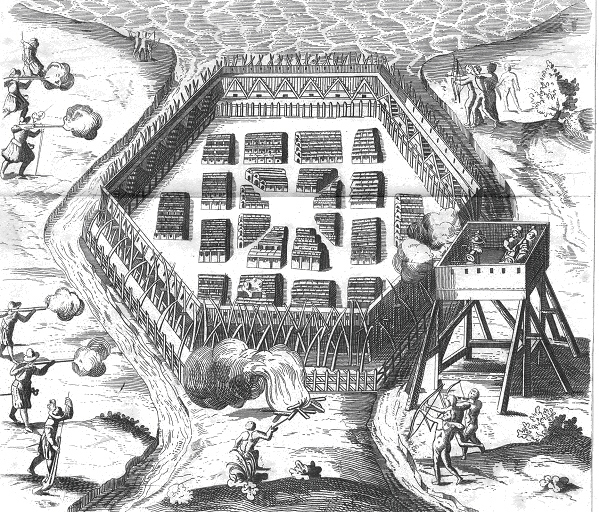
An old engraving shows the well designed Oneida Castle which withstood a siege by French Force that was seeking control of the Mohawk Valley.
The Dutch now move into the Mohawk Valley and build Fort Orange at Albany. This is the first “white” settlement in the Mohawk Valley. In 1702 two Indian groups, the Twightwighs and Teoreondaties, petitioned the Governor of New York, Lord (?) Cornbury to build a short road connecting the Mohawk River with Wood Creek. The request was granted and the road was built. The Oneida Carry was born. Literally this meant that the canoes or bateau had to be carried from Wood Creek to the Upper or Lower landings of the Mohawk River. The first defense that was known to be built in and around the Oneida Carry was constructed sometime during 1689 by the French. No information exists about this fort, other than it was believed to have been built at the present site of Fort Stanwix. Another fort that very little information exists on was built by the English in 1728. This fort was also believed to have been constructed on the site of Fort Stanwix. No ruins of either fort have ever been located. Other forts constructed in the vicinity of Rome include Fort Ball, Fort Wood Creek, Fort Williams, Fort Craven, Fort Bull, Fort Newport, Fort Pentegon, Fort Bute, Fort Eagle and Fort Rickey.
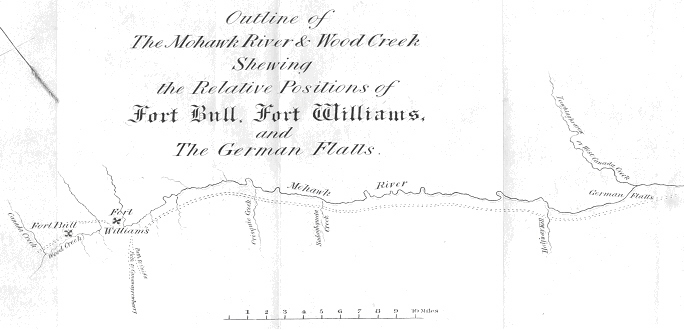
Map showing the defenses of the Mohawk Valley
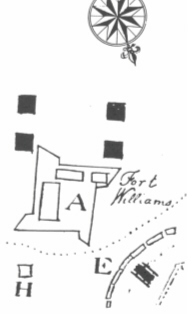
Map of Fort Williams
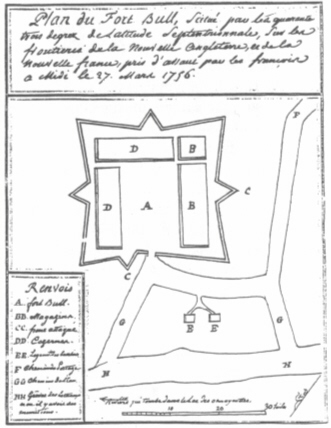
Map of Fort Bull
In June of 1755, Captain William Williams of the 51st Regiment of Foot was assigned to the Oneida Carry. Captain Williams was given an order that sealed the fate of this area forever and its due place in history. The order read, “To clear the road between the Mohawk River and Wood Creek in anticipation of General William Shirley’s army moving to Oswego from Albany.” Captain Williams, an engineer by trade, took with him two companies to fortify the Oneida Carry. Captain Williams was to begin at the east end of the carry and a Captain Douglas of the same regiment was to begin at the west end of the carry. They arrived on June 28th and were met with an unexpected setback, the Oneida Indians. The Oneidas had already established themselves in this part of the wilderness and also operated trading posts along the carry. They were reluctant to let the 51st do the task they had been assigned. On July 10th, Captain Williams received supplemental orders to construct a 35 feet by 25 feet storehouse. The Oneidas refused to allow the men to work, stating that they were never informed by their council elders that they had approval to build at the carry. Confirmation came from the council elders a few days later and Captain Williams began to construct his storehouse.
Captain Williams and his men were viewed as a threat by the Oneidas. In a world class move of diplomacy, Captain Williams slowly won over the admiration of the Oneidas. Instead of going through the normal army channels, Captain Williams procured the needed supplies and food staples from the Oneidas at exorbitant prices. Once the Oneidas saw that Captain Williams and his men were of no threat to them, and that they were actually helping to protect them, they accepted Captain Williams as a member of the family. He was given the title “Honsada” and was even allowed to sit in on council meetings. Once completed, he christened the new defense Fort Williams. The defense boasted four half bastions and was situated on fairly high ground on the banks of the Mohawk River. Captain Williams proclaimed this to be the first fort ever built to defend the Oneida Carry.
|